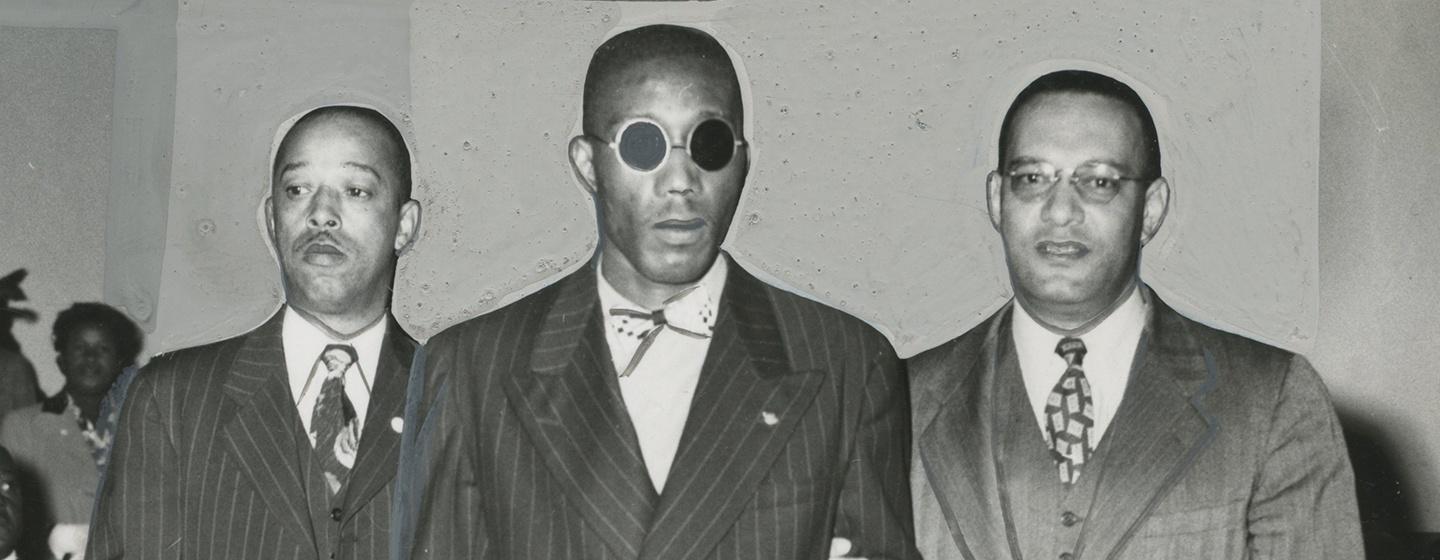American Experience, The Blinding of Isaac Woodard
Tuesday, March 30, at 9 PM
Repeats Wednesday, March, 31, at 2 AM
Also airs on Fusion on Saturday, April 3, at 3 PM
In 1946, Isaac Woodard, a Black army sergeant on his way home to South Carolina after serving in WWII, was taken off a Greyhound bus after a heated exchange with the driver, who refused to let him off at a rest stop to use the restroom. The local chief of police savagely beat him, leaving him unconscious and permanently blind. The shocking incident made national headlines and, when the police chief was acquitted by an all-white jury, the blatant injustice would change the course of American history. Based on Richard Gergel’s book Unexampled Courage, the film details how the crime led to the racial awakenings of South Carolina Judge J. Waties Waring and President Harry Truman, who desegregated federal offices and the military two years later. The event also ultimately set the stage for the Supreme Court’s landmark 1954 Brown v. Board of Education decision, which finally outlawed segregation in public schools and jumpstarted the modern civil rights movement.
‘“The Blinding of Isaac Woodard’ illustrates how a single individual can be the spark that ignites a movement and creates a seismic shift in public opinion,” said Cameo George, AMERICAN EXPERIENCE executive producer. “Although his name is little-known today, Isaac Woodard’s story changed hearts and minds—and the law of the land.”
Below is a timeline of events:
- February 12, 1946 – 27-year-old Isaac Woodard, recently discharged from the army and still in uniform, heads home to Winnsboro, South Carolina on a bus full of fellow soldiers, Black and white. Woodard asks the bus driver to stop so he can use the restroom; the driver relents but at the next stop summons two police officers who violently beat Woodard, gouge his eyes out and throw him in jail. One of many horrific incidents of violence faced by Black soldiers returning from the war, the case, along with several others, was investigated by the NAACP legal defense department, headed by Thurgood Marshall.
- April 23, 1946 – Woodard travels to New York City to meet with Walter White, Executive Secretary of the NAACP, in New York City, who is looking for cases to dramatize the nature of the Southern racial system to gain support. White enlists the help of Orson Welles, who publicizes Woodard’s story on his weekly radio show. The case becomes a national cause célèbre and the NAACP sends Woodard on a nationwide speaking tour.
- September 19, 1946 – Walter White and a delegation of religious and labor leaders meet with President Harry S. Truman, urging him to pass legislation prohibiting lynching. When White realizes Truman isn’t going to move forward, he tells the president, also a veteran, the story of Isaac Woodard. Truman is enraged. Five days later, the U. S. Attorney General orders federal prosecutors in South Carolina to initiate criminal proceedings against the man responsible for Woodard’s blinding, Police Chief Lynwood Shull.
- November 5, 1946 – Shull’s trial begins, presided over by Judge J. Waties Waring, a Charleston patrician. It concludes the same day with Shull acquitted by the all-white jury. Judge Waring and his wife are appalled at the blatant miscarriage of justice; Waring will devote the rest of his career to the fight against racism. The Warings become the targets of threats and violence.
- December 5, 1946 – President Truman signs an executive order establishing the President’s Committee on Civil Rights.
- June 28, 1947 – Truman accepts an invitation from Walter White to give the keynote address at the annual convention of the NAACP. “There is no justifiable reason for discrimination because of ancestry, or religion, or race, or color,” Truman says in his speech in front of the Lincoln Memorial. “We cannot any longer await the growth of a will to action in the slowest state or the most backward community. Our national government must show the way.”
- July 1948 – At the Democratic National Convention in Philadelphia, southern Democrats (colloquially called “Dixiecrats”) storm out of the convention hall, incensed by the civil rights plank in the party’s platform. Truman refuses to retreat and, on July 26, issues Executive Orders 9980 and 9981, integrating the military and federal government offices.
- May 28, 1951 – The trial of Briggs v. Elliott begins, a suit brought by a group of Black parents, who are frustrated by the poor state of their public school in rural Clarendon County, South Carolina. The case is tried by an NAACP team led by Thurgood Marshall and presented before a panel of three judges, including Judge Waring. Two days later, the Briggs plaintiffs lose the suit allowing “separate but equal” to stand in South Carolina. Waring writes a passionate dissent.
- May 17, 1954 – The Briggs case and four other similar school desegregation cases are consolidated into a single case, Brown v. Board of Education of Topeka, Kansas. The Supreme Court’s unanimous ruling outlaws segregation in public schools.
- September 23, 1992 – Isaac Woodard dies in the Bronx, New York, unaware of how his blinding and the miscarriage of justice that followed had emboldened a federal judge and a sitting president to pursue the destruction of legal segregation.



